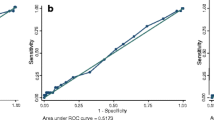Abstract
A complement fixation (CF) test, a micro-immunofluorescence (micro-IF) test and an enzyme immunoassay (EIA) using Re-lipopolysaccharide as antigen were compared in the diagnosis of chlamydial infection in 136 mainly elderly patients hospitalized with community-acquired pneumonia during aChlamydia pneumoniae epidemic in Finland in 1986–1987. Chlamydial pneumonia was diagnosed in 58 (42.6 %) of the 136 pneumonia patients; 44 (75.9 %) of them could be shown by micro-IF to be caused byChlamydia pneumoniae, three byChlamydia psittaci and four byChlamydia spp. Only 5 (11.4 %) of 44 patients withChlamydia pneumoniae pneumonia were IgM-positive, indicating that the majority of cases were reinfections. In this population of mainly elderly patients the CF test was insensitive, being positive in only 6 (10.3 %) of 58 cases of chlamydial pneumonia. The EIA detected 72.4 % of cases and micro-IF 87.9 % of cases (including infections withChlamydia pneumoniae, Chlamydia psittaci andChlamydia spp.). In the EIA 77 % of positive cases were positive in serum samples taken a week apart, whereas the corresponding figure for micro-IF was 50 %. In micro-IF the measurement of IgA antibody levels is recommended and IgM-positive sera should be retested after removal of IgG antibody to avoid false-positive findings due to presence of rheumatoid factor. The collection of a third serum sample, for instance one month after onset, is also recommended, since half of the patients showed a diagnostic response in the micro-IF only in the sera taken one month apart.
Similar content being viewed by others
References
Saikku P, Wang SP, Kleemola M, Brander E, Rusanen E, Grayston JT: An epidemic of mild pneumonia due to an unusual strain ofChlamydia psittaci. Journal of Infectious Diseases 1985, 151: 832–839.
Grayston JT, Kuo CC, Wang SP, Altman J: A newChlamydia psittaci strain, TWAR, isolated in acute respiratory tract infections. New England Journal of Medicine 1986, 315: 161–168.
Marrie TJ, Grayston TJ, Wang SP, Kuo CC: Pneumonia associated with TWAR strain ofChlamydia. Annals of Internal Medicine 1987, 106: 507–511.
Kleemola M, Saikku P, Visakorpi R, Wang SP, Grayston JT: Epidemics of pneumonia caused by TWAR, a newChlamydia organism, in military trainees in Finland. Journal of Infectious Diseases 1988, 157: 230–236.
Fang GD, Fine M, Orloff J, Arisumi D, Yu VL, Kapoor W, Grayston JT, Wang SP, Kohler R, Muder RR, Yee YC, Rihs JD, Vickers RM: New and emerging etiologies for community-acquired pneumonia with implications for therapy: a prospective multicentre study of 359 cases. Medicine 1990, 69: 307–316.
Grayston JT, Campbell LA, Kuo CC, Mordhorst CH, Saikku P, Thom DH, Wang SP: A new respiratory tract pathogen:Chlamydia pneumoniae strain TWAR. Journal of Infectious Diseases, 1990, 161: 618–625.
Thom DM, Grayston JT, Wang SP, Kuo CC, Altman J:Chlamydia pneumoniae, strain TWAR,Mycoplasma pneumoniae and viral infections in acute respiratory disease in a university student health clinic population. American Journal of Epidemiology 1990, 132: 248–256.
Cles L, Stamm W: Use of HL cells for improved isolation and passage ofChlamydia pneumoniae. Journal of Clinical Microbiology 1990, 28: 938–940.
Kuo CC, Grayston JT: A sensitive cell line, HL cells, for isolation and propagation ofChlamydia pneumoniae strain TWAR. Journal of Infectious Diseases 1990, 162: 755–758.
Wong KH, Skelton SK, Chan YK: Efficient culture ofChlamydia pneumoniae with cell lines derived from the human respiratory tract. Journal of Clinical Microbiology 1992, 30: 1625–1630.
Sillis M, White P, Caul EO, Paul ID, Treharne J: The differentiation ofChlamydia species by antigen detection in sputum specimens from patients with community-acquired acute respiratory infections. Journal of Infection 1992, 25, Supplement 1: 77–86.
Ekman MR, Grayston JT, Visakorpi R, Kleemola M, Kuo CC, Saikku P: An epidemic ofChlamydia pneumoniae infection in military conscripts. Clinical Infectious Diseases 1993, 17: 420–425.
Nurminen M, Leinonen M, Saikku P, Mäkelä PH: The genus-specific antigen ofChlamydia. Resemblance to the lipopolysaccharide of enteric bacteria. Science 1983, 220: 1279–1281.
Koskela M, Leinonen M: Comparison of ELISA and RIA for measurement of pneumococcal antibodies before and after vaccination with 14-valent pneumococcal capsular poly-saccharide vaccine. Journal of Clinical Pathology 1981, 34: 93–98.
Wang SP, Grayston JT: Microimmunofluorescence serological studies with the TWAR organism. In: Oriel JD, Ridgeway G, Schachter J, Taylor-Robinson D, Ward M (ed): Chlamydial infections. Cambridge University Press, Cambridge, 1986: 329–332.
Kerttula Y, Leinonen M, Koskela M, Mäkelä PH: The etiology of pneumonia. Application of bacterial serology and basic laboratory methods. Journal of Infection 1987, 14: 21–30.
Jokinen C: The etiology and risk factors in population based survey of community acquired pneumonia in Central Finland, Original Reports 5/1991. University of Kuopio, Kuopio, Finland, 1991.
Ozanne G, Lefebvre J: Specificity of the microimmunofluorescence assay for the serodiagnosis ofChlamydia pneumoniae infection. Canadian Journal of Microbiology 1992, 38: 1185–1189.
Verkooyen RP, Hazenberg MA, Van Haaren GH, Van Den Bosch JM, Snijder RJ, Van Helden HP, Verbrugh HA: Age-related interference withChlamydia pneumoniae microimmunofluorescence serology due to circulating rheumatoid factor. Journal of Clinical Microbiolology 1992, 30: 1287–1290.
Author information
Authors and Affiliations
Rights and permissions
About this article
Cite this article
Ekman, M.R., Leinonen, M., Syrjälä, H. et al. Evaluation of serological methods in the diagnosis ofChlamydia pneumoniae pneumonia during an epidemic in Finland. Eur. J. Clin. Microbiol. Infect. Dis. 12, 756–760 (1993). https://doi.org/10.1007/BF02098463
Issue Date:
DOI: https://doi.org/10.1007/BF02098463




